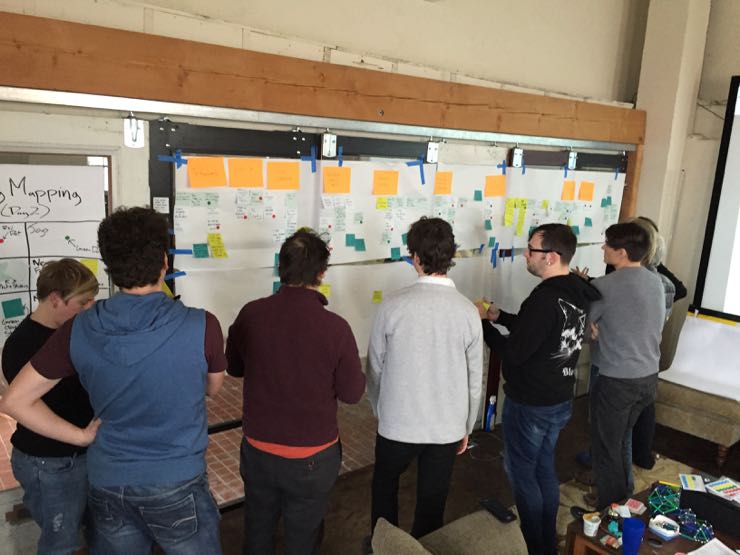Four Reasons To Use Sticky Notes
My coworkers joke that I secretly have large investments in 3M. Boxes of Post-it notes regularly are being shipped to our office, our walls are covered with them and it’s not an uncommon occurrence to find someone scraping at their shoe to flip off the vagabond sticky hitching a ride. Sticky notes at first glance may seem like chaos when there are so many well polished tools out there that are luring you to start your ‘free trial’. Here are 4 benefits to using sticky notes that you just can’t get with a digital tool.

Removes Unwanted Finality.
I find that Agile is often about asking ‘why?’. Why are we building this feature? Why do we believe this about our users? We want to build the right thing despite not always knowing what the right thing is. We run experiments. We get things wrong and that is OK because we have short feedback cycles and can pivot as we learn more.
Granted, I have no research behind this, but there seems to be a psychological component in us that processes a digital or printed medium as more ‘final’ than a hand written sticky note. It’s hard to have a lot of pride tied up in 3x3 sticky note (especially with my handwriting) versus a well thought out JIRA item with a description that spans 4 paragraphs and has multiple artifacts attached to it. Removing that psychological finality of seeing work items or proposals in digital/printed form frees up the team to ask more ‘why’ type questions in order to challenge assumptions, iterate on the item in question to further expose the value/hypothesis, and even toss it out if it is found to have questionable value.
Radiates Information
The Sprint Backlog, the Kanban Board, the Product Backlog board, the User Personas, the User Story Map, the Burndown Charts, etc all have valuable information that we want exposed to our teams to unify direction, goals and track progress. By exposing these indicators on the physical walls of our workspace we free up these indicators to fully radiate their information. No longer does someone need to remember to check a tool, click on a bookmark, login, click a few times and then digest the information on 24” monitor.
Count how many steps it takes for someone to access your indicators. Consider it is as a funnel where at each step there is potential for fall off. By keeping your indicators on the walls of your workspace, with big and small stickies, all the information is just a head turn or at worst, a short walk away.
Keeps meetings tech free
Technology is a productive meeting killer. Laptops get opened, email gets replied to, Slack channels are browsed, and Cmd-tabbing ensues. By using physical stickies as the medium for our meetings we can eliminate technology distractions and get fully engaged as a team on the meeting at hand to keep it efficient and productive.
Automated Reprioritization Forcing Function!
Sticky notes have this advanced technology built-in where they lose their stickiness after an unknown number of days. They then fall off the wall. This may be a stretch, but I argue this randomized sticky drop off is a valuable forcing function for the team.
Consider a backlog of work, a sticky on the floor is a forcing function to reprioritize and reevaluate the priority of our backlog. It’s a kind of chaos monkey. It’s a quick test to see how well the shared understanding is flowing across the team. Can someone pick up the sticky and put it back in the right place? If not, there is a gap in shared understanding and it probably is worth having a quick conversation about what the meaning and priority of that item is.
Conclusion
If you have a co-located team how do you uses sticky notes in your team? If you have a distributed team have you found a way to incorporate stickies into your process? If not, have you used other tools and techniques to remove unwanted finality, radiate information, keep meetings tech free and automate a reprioritization forcing function? What challenges have you found using sticky notes?